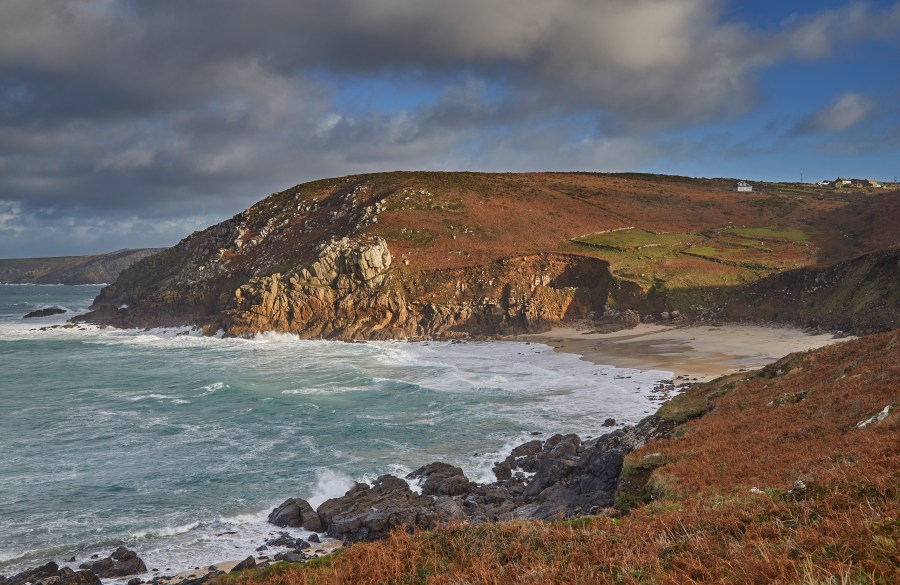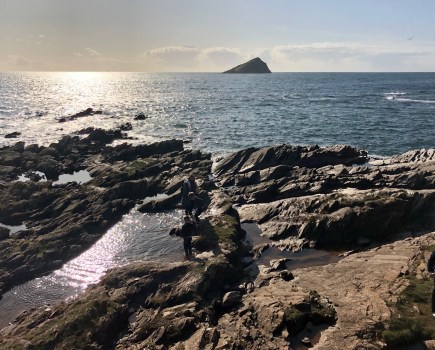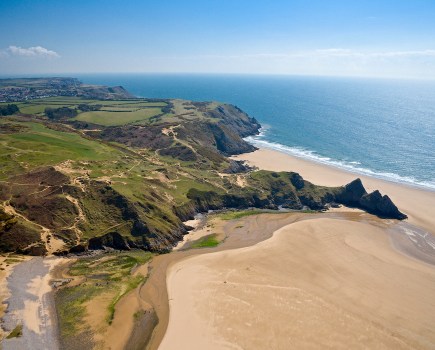South west-based writer/photographer NIGEL HICKS shares his love of five coves along Cornwall’s Atlantic coast, places where it’s possible to dodge the crowds.
Cornwall’s Atlantic coast is a wild and rugged place, high cliffs alternating with long sandy beaches and the occasional narrow, often hard-to-reach cove, along with (of course) the occasional town, principally Bude, Newquay, Padstow and St Ives. During the summer months both the beaches and the towns can be impossibly crowded, although during the spring they’re usually pleasantly quiet.
But what about those coves? They’re quiet all year round, few people venturing far enough off the beaten track to reach them, making them ideal targets for those who truly want to explore.
As someone who has had Cornwall in their bones for many years, and who has an ingrained dislike of crowds, I’ve developed quite a list of quiet coves that I can retreat to whenever the need arises. Now I’m going to share just five of those that lie along the rugged Atlantic coast, places where the cliffs relent briefly, falling away sometimes as barely more than a cleft in the landscape to create a hidden piece of accessible shore.
Moving east to west, the first one up is the quaintly named Duckpool. Lying a short distance south of the Devon border, this cove is the seaward mouth of the steep and beautifully wooded Coombe Valley. The stream that runs along this valley flows across the beach, cutting it in two.
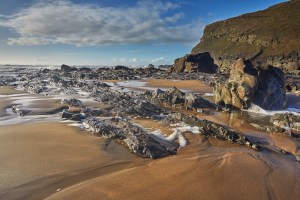
For some, ‘beach’ might be too strong a word, as there is precious little sand here, although at low tide a few patches do appear. Instead, this is largely a place of boulders and pebbles, hemmed in by high hills and cliffs, the highest being Steeple Point to the north.
How Duckpool came by its curious name is a mystery, but that’s rather part of the attraction, along with the fact that this cove rarely gets busy even though it’s a great place to explore and to serve as a starting and finishing point for coastal walks. There is a small car park behind the beach, though no cafe facilities.
Further south and just beyond Cornwall’s Arthurian capital, Tintagel, lies Trebarwith Strand. Not so much a single cove as a string of coves that link up at low tide to create a magnificent mile-long sandy beach, this is quite a spectacular cliff-backed location. Access to the beach is via the hamlet of Trebarwith Strand, close to the beach’s southern end, and along a ramp cut many years ago through the shoreline rock to allow carts access for the collection of seaweed.
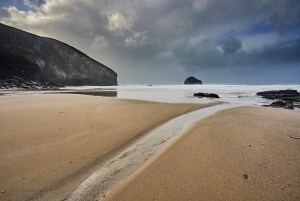
Don’t get completely carried away with exploring this wonderful place: with the beach completely covered for a couple of hours either side of high tide it is easy for anyone walking towards the northern end of the beach to become cut off. Always be aware of the tide times and adapt your walks accordingly.
Similarly, in stormy weather surf surges – even at low tide – can wipe out much of the beach. If high tide or storms cramp your walking style, there is always The Port William Inn to retreat to, a pub with views across the beach entrance and the southern part of the beach. Parking is in two nearby pay-and-display car parks.
All three of my remaining cove selections lie on the Penwith peninsula, Cornwall’s most westerly toe beyond St Ives. The first of this trio is Portheras Cove, a north-facing beautifully sandy beach hemmed in by hills and cliffs, and which sits within reasonable walking distance of a small car park next to Pendeen lighthouse. Access from here is via the coast path and then a steep drop down to the sand alongside a tumbling stream that ends in a waterfall onto the sand.
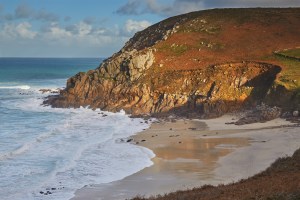
At the western end, and linked directly to Portheras only at low tide, is another much smaller cove that once had a few fishing boats. Today a handful of old fishermen’s huts still sit on the slopes above the cove, though now largely converted to holiday lets, linked to the cove via a steep slipway.
Portheras’s remote location on such a remote and rugged coast makes it a good place to spot seals, which can often be spotted on the nearby rocks or floating around in the waters just off the beach.
A few miles further south and on the outskirts of the old mining town of St Just is Cot Valley. The valley itself is a narrow, steep-sided cleft that drops down from the town, coming to an end at its own cove, usually marked on maps as Porth Nanven. A small road leads down through this valley, coming to an end in a small car park behind the beach.
Tightly enclosed, once more, by high cliffs, this is another largely boulder-strewn cove, although at low tide there is a very inviting stretch of sand that makes this place attractive for a swim.
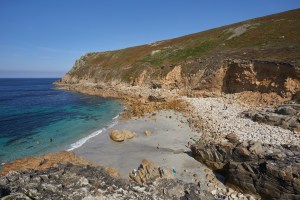
Porth Nanven is sometimes nick-named the ‘Dinosaur Egg Beach’, due to the highly rounded nature of many of its boulders. Offshore, lie twin triangular rocks, known as The Brisons, a well-known local landmark that is sometimes the target of a swimming race.
Both the valley itself and the adjacent coastal cliffs are riddled with the remains of 19th century tin mining, including a few still unfenced mine shafts. As a result it is unwise to wander far off the many footpaths, especially if vegetation hides the ground ahead.
My final cove lies south of Land’s End and actually faces south. This is the tiny cove of Porthgwarra, backed by a hamlet of the same name, that was once a thriving, though small fishing community. Today, most of the houses are holiday homes. A steep slipway and winch are the main reminders of Porthgwarra’s fishing past, with the slipway also providing access to the shore for swimmers and walkers.
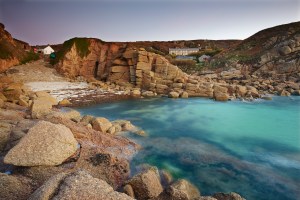
Porthgwarra is sheltered from the open Atlantic by the huge bulk of Gwennap Head, just west of the cove. This hugely important headland is the meeting point for Cornwall’s north and south coasts, where the coastline takes an abrupt right-angle turn. The headland itself is a spectacular place of huge granite boulders and columns, and it is a very good place from which to spot passing marine wildlife.
There are of course many more coves along Cornwall’s coasts, both the rugged Atlantic side and its more sheltered south coast. These are just my favourites that might get you started in your Cornwall off-the-beaten-track explorations. Once you’ve got a taste for remote Cornwall from these five, you’ll really want to go out and find many more.
PORT WILLIAM
I used to be a little puzzled as to why the one and only beachside pub at Trebarwith Strand should be called the Port William. There’s no port here, and no William, either. It turns out, however, that the southernmost part of the Strand contains the (barely visible) remains of a dock that was once used for the shipping of slate produced from nearby quarries. This dock was named Port William, and although it no longer survives, the nearby pub continues with the name.
THE PORTHGWARRA TUNNELS
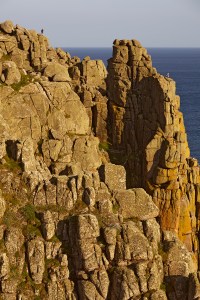
A fascinating feature of Porthgwarra is the tunnels that have been cut through the cliffs to link the slipway with other parts of the cove and village. Kids, of course, want to make pirate and smuggler stories out of them, but actually they were created originally to allow farmers to bring carts down to the shore to enable collection of seaweed, once an important fertiliser for the fields. The slipway would have been too steep for such a cart, certainly when loaded, while the tunnels provided a gentler slope and hence easier access.
For more ideas on things to do in Cornwall, check out our 10 best days out in Cornwall.

